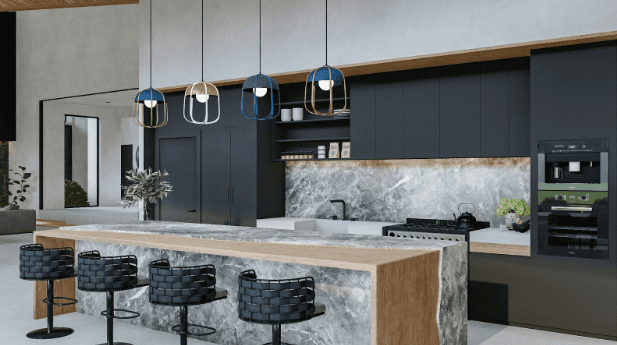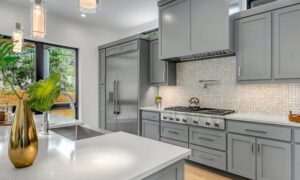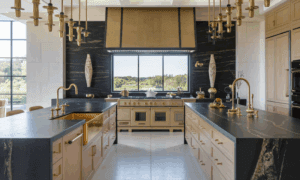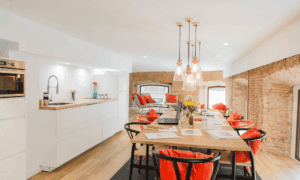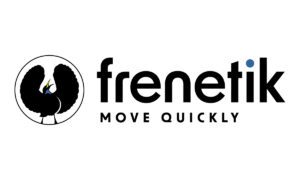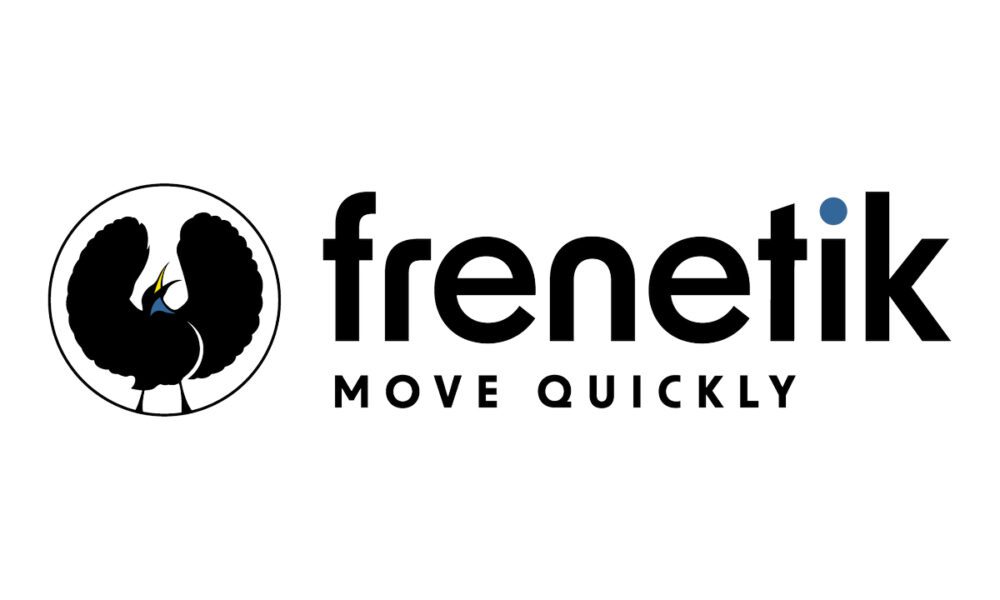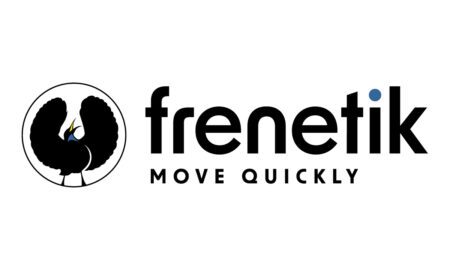Introduction
The kitchen remains the heart of the home—and remodeling it continues to be one of the most valuable investments a homeowner can make. But if you’re considering a remodel, the question always comes first: how much does it really cost to remodel a kitchen?
In 2025, the answer depends on your goals, space, and materials. A simple refresh might cost as little as $15,000, while a full renovation with premium finishes and layout changes can exceed $100,000. Understanding what drives these costs—and how to plan effectively—can help you achieve your dream kitchen without unnecessary surprises.
This guide breaks down the real numbers, common cost factors, and smart ways to budget and save—while ensuring your project runs smoothly from concept to completion.
Average Kitchen Remodel Costs in 2025
National Averages and What They Mean
Across the United States, kitchen remodels vary widely in price depending on size and finish level:
- Minor updates (cosmetic refresh): $15,000 – $30,000
- Mid-range remodel: $40,000 – $75,000
- Luxury or full renovation: $80,000 – $150,000 +
For most mid-sized kitchens, the sweet spot in 2025 sits around $60,000–$90,000, including cabinetry, appliances, countertops, and labor. Urban markets and high-end material selections can easily push totals higher.
Cost per Square Foot
The average kitchen remodel runs between $100 and $400 per square foot. A smaller kitchen with minimal structural changes may fall on the lower end, while open-concept kitchens or projects that relocate plumbing, walls, or electrical lines will trend higher.
ROI and Resale Impact
Kitchen remodels consistently deliver some of the highest returns on investment in home improvement. A well-planned mid-range project typically recoups about 60–70% of its cost on resale, while upscale remodels average closer to 50%. However, even if you’re not selling soon, an updated kitchen adds everyday functionality and energy savings.
What Drives Kitchen Remodel Pricing
1 – Cabinetry and Storage (25–30 % of Budget)
Cabinetry is often the single biggest expense. Stock cabinets are the most affordable, semi-custom options balance cost and design, and fully custom cabinetry allows maximum flexibility—but at a premium. Consider internal storage upgrades like pull-out drawers, organizers, and soft-close hinges to make every inch count.
2 – Countertops and Surfaces
Materials dramatically influence pricing and maintenance needs. Laminate can cost less than $50 per sq ft, while quartz averages $75 +, and natural stones like granite or marble can exceed $100 per sq ft. Durability, appearance, and upkeep should guide your decision.
3 – Appliances, Plumbing & Lighting
Expect appliances and fixtures to represent 15–25 % of total costs. Modern trends lean toward energy-efficient, smart appliances and layered lighting—task, accent, and ambient—to balance functionality and aesthetics.
4 – Labor and Structural Work
Labor typically makes up 40–60 % of the total budget. Opening walls, moving gas lines, or reconfiguring layouts significantly increases cost. Don’t forget building permits, electrical upgrades, and flooring transitions that arise during construction.
Planning a Remodel That Matches Your Budget
Set Priorities Early
Start by separating your must-haves from your nice-to-haves. Decide which features—like expanded islands, luxury countertops, or custom cabinetry—add the most value for your lifestyle. Setting clear priorities prevents budget drift later.
Work with a Professional Designer
Even small layout changes have major functional implications. An experienced kitchen designer can improve flow, increase storage, and tie together materials beautifully. For homeowners in the planning stage, collaborating with experts such as Kitchen Search ensures every detail—from cabinetry configuration to appliance placement—is thoughtfully designed for both style and efficiency.
Collect Multiple Quotes
Always compare at least three contractor estimates. Evaluate not just price but also the proposed timeline, materials, and warranty coverage. Be wary of bids that seem unusually low—they often omit key labor or material costs.
Budget for the Unexpected
A 10–15 % contingency fund is crucial. Hidden plumbing issues, electrical code updates, or structural surprises behind walls are common in remodels and can easily add thousands to the final total.
Choosing the Right Contractor for Execution
Vetting Builders and Remodelers
Look for licensed and insured contractors with relevant experience and verified references. Review past project photos and ask how the team handles scheduling, communication, and subcontractor coordination.
Fixed-Price vs. Cost-Plus Contracts
Fixed-price contracts lock in total costs (great for budgeting); cost-plus models add flexibility for material upgrades but require more trust and oversight. Discuss payment schedules and change-order procedures upfront.
The Value of Full-Service Remodeling
For projects that involve structural modifications, new flooring, or entire kitchen build-outs, working with a full-service company provides better accountability and efficiency. Professionals like Capital Construction specialize in coordinating every aspect of the remodel—from demolition and permitting to installation and finishing—ensuring craftsmanship and compliance throughout.
Cost-Saving Strategies Without Cutting Corners
Reface Instead of Replace
If cabinet boxes are in good condition, refacing or repainting can save 40–60 % compared to new custom cabinetry.
Mix Materials Strategically
Use premium materials where they’ll make the biggest impact—like a statement island—and pair them with cost-effective options elsewhere.
Time It Right
Contractors often offer better pricing during off-peak months (late fall and winter). Planning early also prevents rush surcharges.
DIY vs. Professional Work
Simple projects like painting or installing a backsplash can be DIY-friendly, but electrical, plumbing, and countertop fabrication are best left to licensed pros.
2025 Trends Influencing Kitchen Remodels
Sustainable and Smart Kitchens
Homeowners increasingly seek eco-friendly solutions: induction cooktops, LED lighting, water-saving fixtures, and recycled materials. Smart appliances that track energy use and grocery inventory are now mainstream.
Minimalist Luxury
Neutral palettes with natural textures dominate—think oak cabinetry, matte black fixtures, and stone-look porcelain countertops. The focus is on tactile warmth rather than flashy finishes.
Function-First Layouts
Zoned kitchens separate cooking, prepping, and entertaining areas for improved workflow. Hidden storage keeps clutter out of sight while maintaining an open feel.
Final Checklist for a Smooth Remodel
- Approve final design and materials before ordering.
- Confirm permits and inspections are scheduled.
- Keep open communication with your contractor to address issues early.
- Inspect each phase (rough-in, cabinetry, finishes) before signing off.
Conclusion
Remodeling a kitchen is one of the most rewarding ways to upgrade both your home and your daily life. While the cost varies widely depending on materials, labor, and scope, thoughtful planning and experienced professionals make all the difference.
By working with trusted design specialists like Kitchen Search during the planning phase—and experienced contractors such as Capital Construction for expert execution—you can ensure your remodel delivers lasting value, comfort, and beauty. Whether you’re envisioning a sleek modern space or a warm family gathering spot, a well-planned kitchen remodel transforms your home for years to come.

